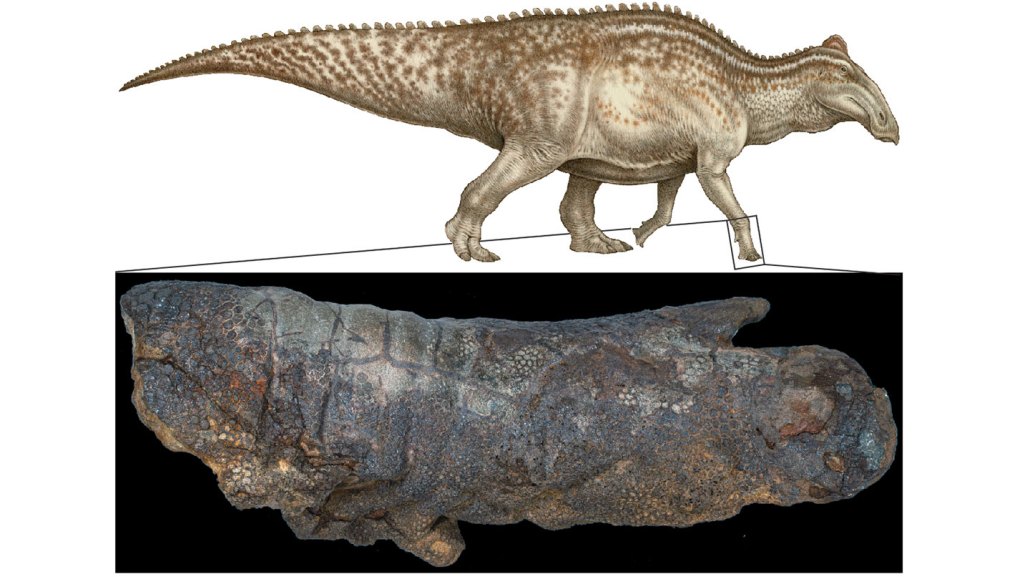Dinosaur ‘mummies’ may not be rare flukes after all
A rapid burial isn’t the only way to preserve skin for fossilization, a study suggests

In life, Dakota was a 12-meter-long duck-billed dinosaur (illustrated at top). Large sections of its body, such as its right front foot, retain fossilized scaly skin (bottom) that extends down to its hooflike nail.
Natee Puttapipat, CC-BY 4.0